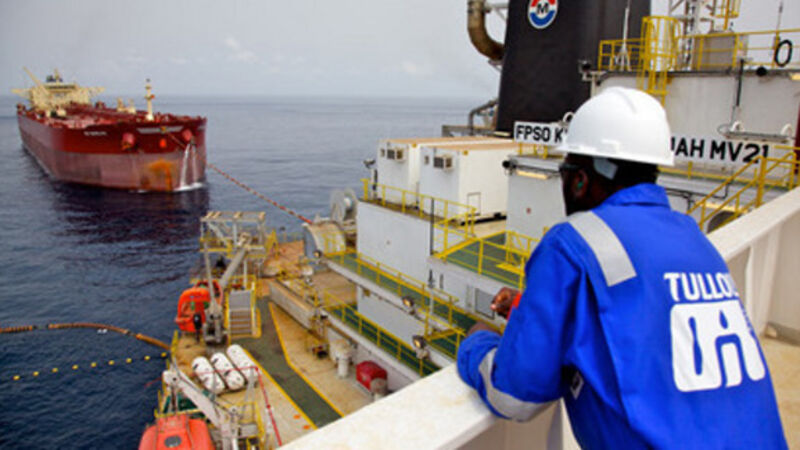Tullow Oil production levels to ramp up next month

Production had been constrained by a gas compression issue, which lowered average production from around 110,000 barrels of oil per day (bopd) to 65,000 bopd. However, that top level will be returned to next month, management said yesterday.
Tullow reported first half revenues of $820m (€743m) for the first half of 2015, yesterday. Although, 35% down on the same period last year — due to asset sales and the effect of falling oil prices — the figure was slightly ahead of recent guidance and beat analyst consensus. Tullow recently adapted its business model — including a slashing in current year capital expenditure and exploration spend — to account for current market conditions and the low oil price environment. Much of the €1.9bn development spend will go on its much-anticipated TEN oil project in Ghana, which is 65% complete and on schedule (and on budget) for first oil flow in mid-2016.
According to chief executive, Aidan Heavey, Tullow will evaluate the prospect of farming down part of its ownership of the project after first flow. Tullow currently owns a 47.5% stake in TEN and has a policy of retaining a 30%-35% stake in any asset in which its sells equity.
TEN will also bump up Tullow’s net debt levels past the $4bn mark; they currently stand at $3.6bn. The company will look to lower debt from next year onwards and bring down its net debt:EBITDA ratio from three times earnings to two times. A recovering oil price will help, but the move is also likely to be prompted by Tullow’s own portfolio management moves, either via asset sales or additional farm-out deals. Tullow’s half year results also showed net losses of $68m. This was down from a first half net loss of $95m last year and reflected a drop in exploration write-down costs from over $400m to $87.5m.
Mr Heavey said that while results are yet to reflect the re-adapting of the business, cash generation remains “solid” and the restructuring will save Tullow $500m over the next three years. The company saved $171m in the first half on price hedging on production output.













